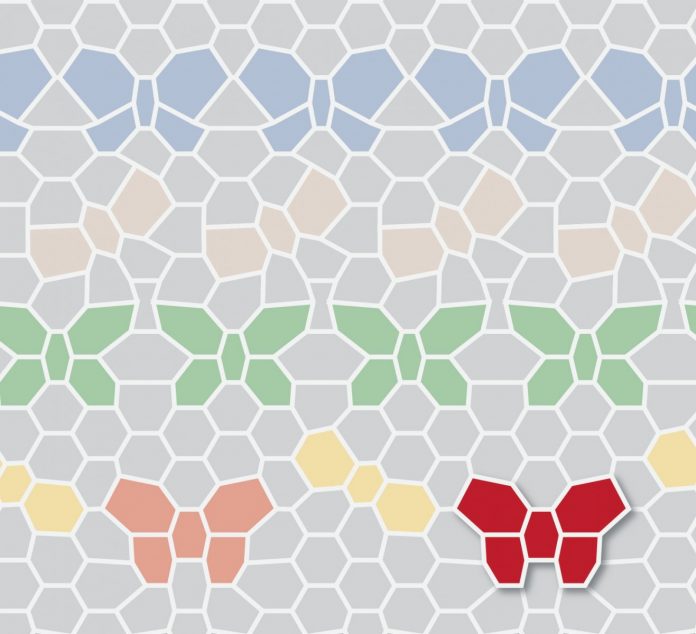The rapidly developing science and technology of graphene and atomically-thin materials has taken another step forward with new research from The University of Manchester.
This research, published in Science, shows how a variety of different electronic properties – essentially new materials – can be realised simply by applying a magnetic field.
Electrons inside materials move quite differently from a free electron in vacuum: their properties are strongly affected by the electric potential of ions comprising the crystal lattice. This interaction changes the mass of electrons and makes materials either metals, semiconductors or insulators, depending on the detailed atomic structure. This provides the great variety of material properties we know and work with.
Earlier, the researchers at The University of Manchester have found ways to create new materials with bespoke electronic properties by placing one electronic material (in this case graphene) on top of another crystal, hexagonal boron nitride. Now, they demonstrate how to create a whole sequence of different electronic materials by simply tuning the applied magnetic field.
In this combination of materials, boron nitride atoms create a periodic pattern for electrons in graphene known as a superlattice. Such a superlattice is characterised by the length scale of the periodic pattern, whereas the strength of applied magnetic field can be counted in so-called flux quanta, elementary units of magnetic field.
A matching condition is achieved each time when an integer fraction of the flux quantum penetrates through an area given by the elementary superlattice. At these special values of magnetic field, the researchers observed that electrons started moving along straight lines, as if the magnetic field were absent.
This is in stark contrast to the known behaviour of electrons in a magnetic field where electrons must move along curved trajectories known as cyclotron orbits. As a result of these changes from straight to curved trajectories and back at many matching conditions, the researchers found oscillations in electrical conductivity of graphene superlattices.
All previously known oscillations in a magnetic field require low-temperatures, typically equal to when helium becomes a liquid. In contrast, the new oscillations were observed at very high temperatures, well above room temperature.
Professor Sir Andre Geim from The University of Manchester, who won the Nobel Prize for Physics in 2010 for his work on graphene, led the experimental effort and said: “Oscillatory quantum effects always present milestones in our understanding of materials properties. They are exceedingly rare. It is more than 30 years since a new type of quantum oscillation was reported.”
He added: “Our oscillations stand out by their extreme robustness, happening under ambient conditions in easily accessible magnetic fields.”
Another remarkable aspect of this work is that graphene superlattices have previously been used to study so-called Hofstadter butterflies, subtle changes in the electronic structure with magnetic field. These changes exhibit a fascinating fractal structure.
Professor Vladimir Falko, Director of the National Graphene Institute who provided theoretical support in this work commented: “Our work helps to demystify the Hofstadter butterfly. The complex fractal structure of the Hofstadter butterfly spectrum can be understood as simple Landau quantisation in the sequence of new metals created by magnetic field.”







